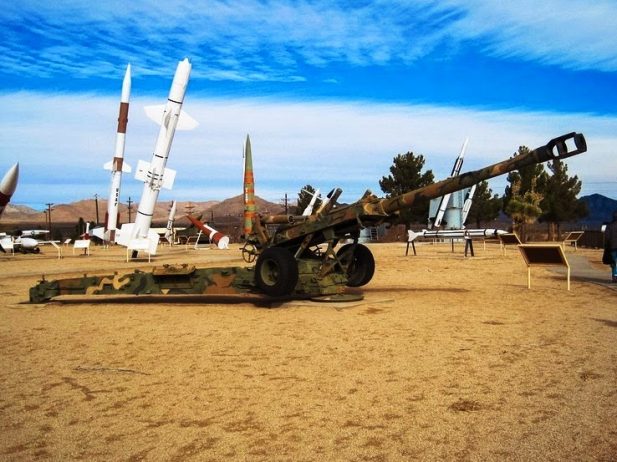The Missile Park is a great opportunity to step back into the Cold War Era of national defense. White Sands Missile Range (WSMR) in southern New Mexico, at nearly 8,300 square km. This is one of the largest military installations in the United States.
The White Sands Missile Range Museum is situated within the premises of the military facility. Approximately 100 km south of the Trinity Site. Missile Park is one of those Cold War relics of the static displays of handiwork. This is not a conventional park by any stretch of the imagination. There’s no large grass field, few trees, and no place to play ball.
Basically, it is a test range with the main function of supporting missile development and test programs for the Army, Navy, Air Force, National Aeronautics and Space Administration (NASA), other government agencies, and industry. Such as most large military installations in the West, White Sands was created during World War II, which is officially established on July 9, 1945, one week before the world’s first nuclear explosion, the Trinity test.
For several years, most of the missile systems in the United States arsenal were tested at WSMR. This is including the V-2, Nike, Viking, Corporal, Lance, and Multiple Launch Rocket Systems. As a bonus, the park is located at the East end of the Mugu runway, so you can hang out and watch all the cool military hardware take off and land.
The missile museum is packed with information about the origin of America’s nuclear program, its pioneering ventures into space, the development of rockets as weapons, and the achievements of scientists like Dr. Wernher von Braun and Dr. Clyde Tombaugh. However, what you do get is an awesome little snapshot of various missiles produced from the late ’50s until the present, along with a couple of jet aircraft (An F4 Phantom and an F14 Tomcat).
The most captivating display of the museum is the missile park. Several of these missiles were classified, state-of-the-art, engineered, and built at a feverish pace as part of a nuclear deterrence strategy. Both sides were utterly convinced that these WMDs were essential and helped her citizens sleep at night. It is an outdoor display of over 60 diverse rockets used in combat from WWII to the Gulf War.
These include everything from the WAC Corporal and Loon (U.S. version of the V-1) to a Pershing II, a Patriot, and the V-2, the world’s first long-range ballistic missiles, and the first man-made thing to reach the fringe of space. These rockets are well installed outside the museum building in an acre-sized garden, and most of them are pointing toward the sky just like ready to blast off.
Aside from housing a wealth of missile-related technology, the museum has sections dedicated to the local flora and fauna, the native peoples who once lived on the land, and a room of paintings by a survivor of the brutal Bataan forced march of WWII, in which up to 10,000 Filipinos and 650 Americans died at Japanese hands.
For any peaceniks out there, you maybe will not appreciate the exorbitant hardworking. The millions of man-hours invested in these now harmless displays. But at least you can observe them close up and consider them one of the most exciting and frightening times in our world’s history. If you like the missile park, you’ll love the Seabee museum who is just 10 minutes away.
Also Read: The Unusual Cold Geysers of Madagascar


















